How to Move Dirt Without A Wheelbarrow- 6 Best Options
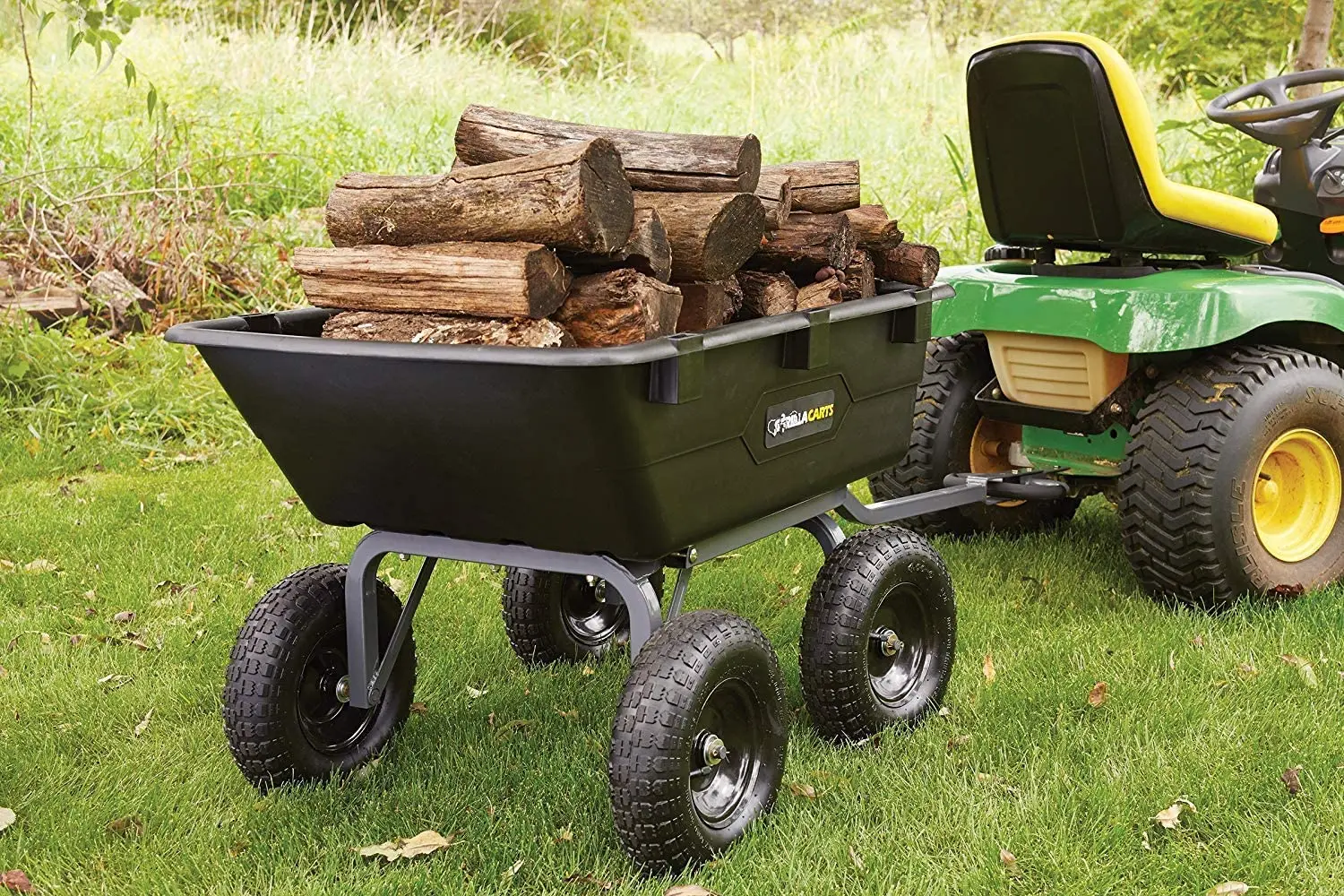
There are several options to move dirt from your yard. And, a wheelbarrow is not unknown to any of the home growers so far.
A wheelbarrow is widely used to transport soil or dirt because of its effectiveness. But there are times when you need an alternative option. When? In simple words, when your load is too heavy to carry by a wheelbarrow, or when you do not own a wheelbarrow.
However, it can’t be the end of the world, right? There are alternatives to wheelbarrows you can use to move dirt from the yard.
So, if you are eager to know how to move dirt without a wheelbarrow, then you’ve landed on the right page. In this article, we will talk about the 6 best options you can go for if using a wheelbarrow is not the option.
Moreover, we will let you know some other relevant and must-know information regarding this topic as you can leave this page having no confusion in your mind.
So, let’s get started.
When You May Need an Alternative to Wheelbarrow?
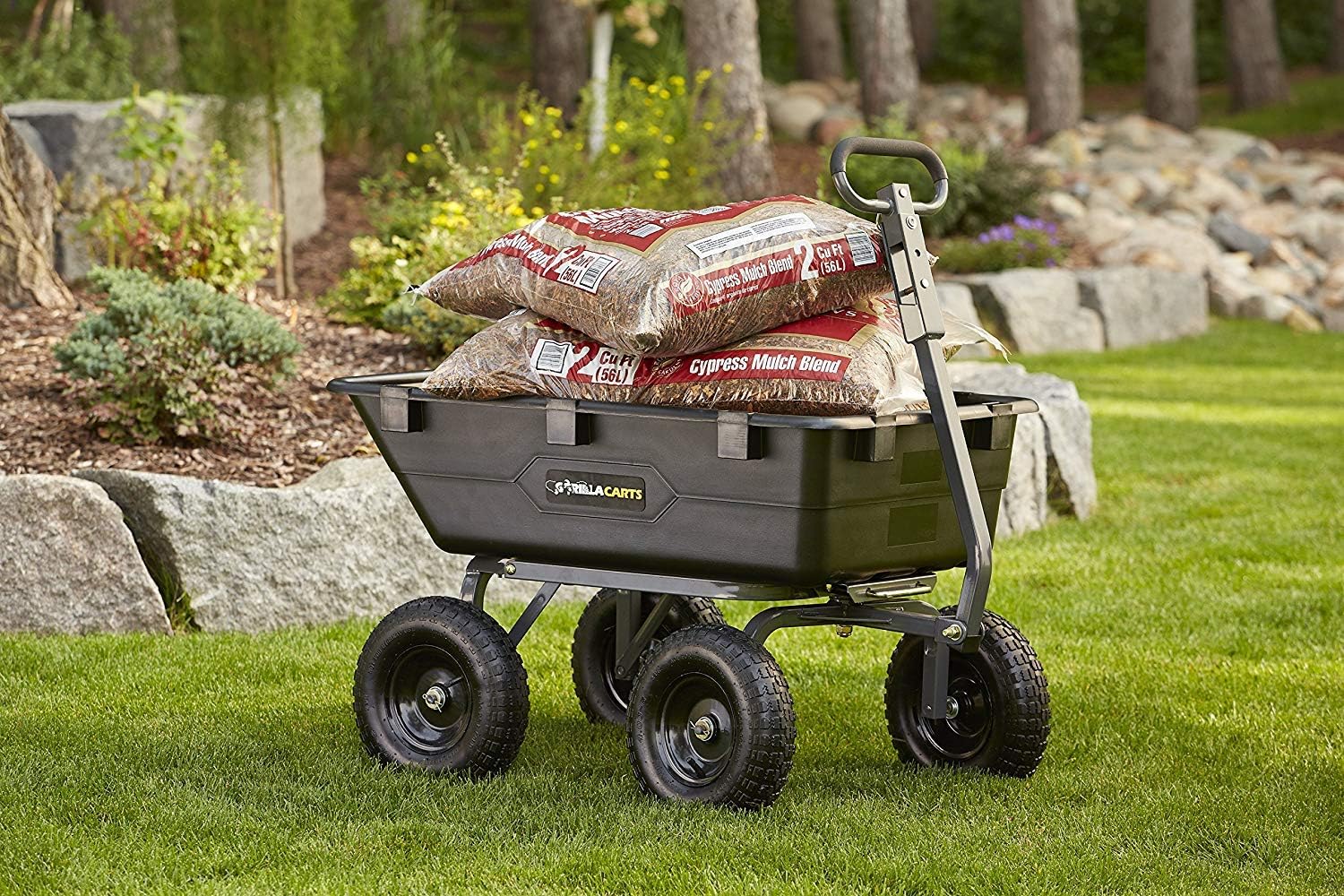
Thanks to wheelbarrows for decreasing the pressure on gardeners’ backs during moving a large amount of dirt. But there are times when wheelbarrows cannot be the option. Wait, when?
In these cases:
- An average-sized wheelbarrow can hold a maximum of 1200 Ibs. So, if your necessity exceeds this amount, you’ll need something else.
- It will take more work to take a wheelbarrow through a rocky or uneven surface.
- Using a wheelbarrow will be an excessive use for small gardens.
Two Major Categories of Dirt Moving Tool
Before we discuss the 5 alternatives to a wheelbarrow, we’ve divided all of the options in two major categories- With wheels & Without wheels. Let’s get to know about it in detail.
With Wheels
If you are going to deal with a large and heavy amount of dirt, then wheel-driven tools will help you more. The hand cart is one of them. However, we will talk about wheeled tools in a detailed manner, read on to know more.
Without Wheels
In case, the amount of dirt is not your headache but the uneven or rocky path is, then this can be a can’t miss option for you. Moreover, these are easy-to-use and inexpensive.
6 Amazing Alternatives to Wheelbarrows
Well, enough beating around the bush. Now, we are entering into the heart of our discussion. Ready to jump in?
Option 1: Using a Tarp
We are starting with a without wheel option, using a tarp to move dirt. But get to know first that it will work best if you slide on a plain, rock-free, smooth surface.
However, this is an ancient and effective way to move dirt. So, this can be your pick if you are not going to use a wheelbarrow.
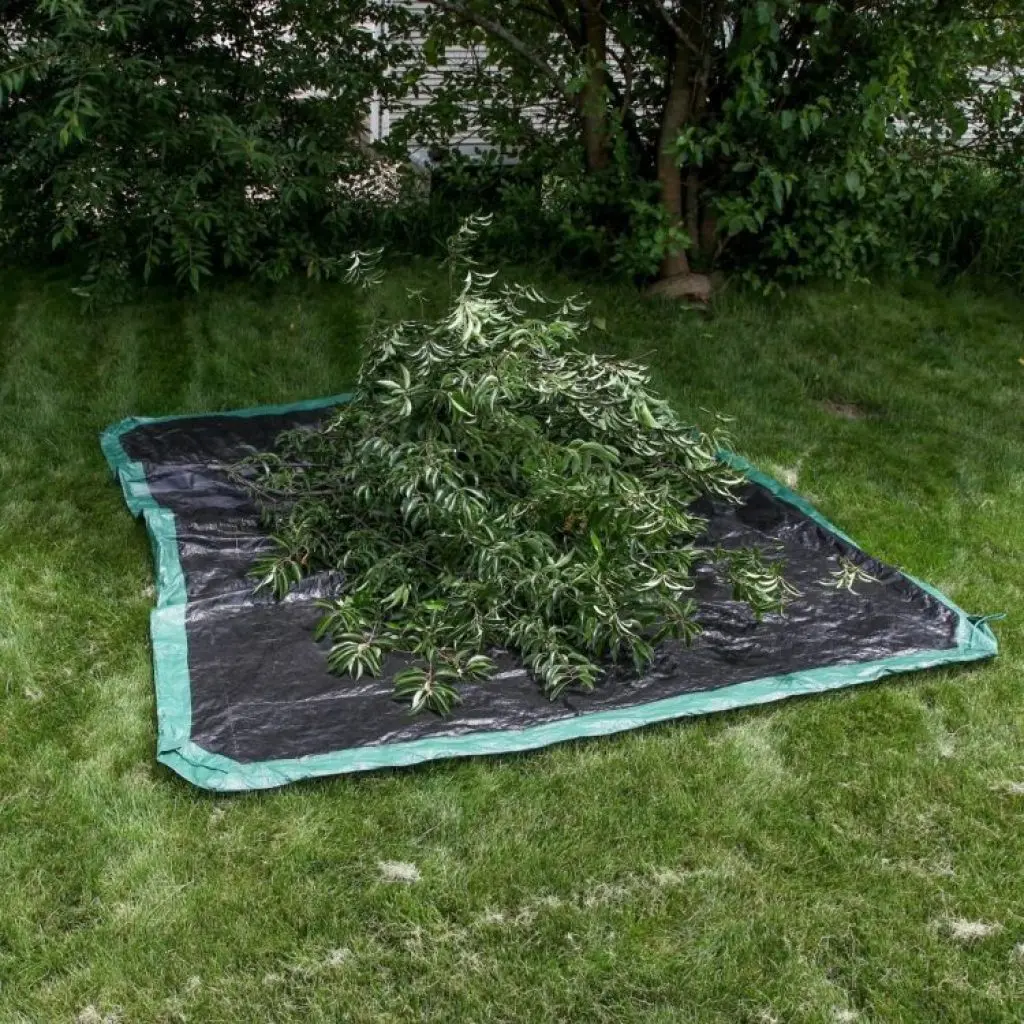
4 Easy Steps to Use a Tarp (One-Person Job)
You can move dirt using a tarp both alone or with the help of someone else. If there’s no helping hand, then simply go through these 4 steps:
Step 1: Lay the Tarp Out
First of all, lay the tarp on the ground. Even if you do not have a tarp, you can use a big piece of cardboard instead of it.
Step 2: Put the Dirt on Your Tarp
Since this is a one-person job, you have to use a short-sized tarp and carry a bit less dirt (as you can make it happen easily). However, put the dirt on your tarp, in particular, in the middle of your tarp.
Step 3: Pull Up the Corners
Once you’ve put the dirt in the middle of the tarp, pull up the corners and tie up the opposing corners. Another option is to use a rope and knot it at one corner of the tarp.
Step 4: Carry the Tarp just Like a Santa Claus Sack
If you’re done with pulling and tying up the corners of the tarp, carry this on your back as Santa clause carries the sack. But if you go for the second option (use a rope) then start pulling the rope and start dragging it on the ground.
So, yes, that’s how you can move the dirt using a tarp alone.
Steps for Two Persons
To make your path easier, get a helping hand. Because if it is a two-persons job, you can carry more loads and even in an easier way.

Step 1: Get A Tarp and Lay It on the Ground
Now, you need to start just like the above-mentioned process. Get a tarp and lay it on the ground and put the dirt on the tarp. So, if you’re done with the piling up the load on the tarp, let’s move on to the next step.
Step 2: Carry the Stuff Both of You
This option is mainly for carrying a big tarp with a heavy load. Now, you drag the tarp up the surface and let your partner hold the back and walk behind. Thus, you’ll be far from sliding off the back and you can do the job more efficiently.
So, that’s that!
Option 2: A Shoulder Yoke & Two Containers
If you are finally going for the one-person job, then this is the easiest and even cheapest option to pick. Also, it is a ‘without wheel’ option.
Easy Steps to Make a Shoulder Yoke
You will be happy to hear that it is a simple DIY project to make a wooden yoke. How? Let’s get to know!
- Choose a straight, strong, free from too many knots- type of poles to make the yoke. You can cut poles from Eucalyptus or other local trees. But before you make the yoke, make sure the poles are completely dry.
- The pole length should be about 40 inches.
- Separate the bark from the wood.
- Now, trim the pole using an ax, remove any knots.
- Draw one centerline along the shaft’s length and then mark the middle point. Since the length is about 40 inches, the center point should be about 20 inches.
- Draw a circle in the middle point to make the hole. Also, mark the area to make two more holes at the poles.
- Cut the wood to exactly the marked center line using a saw.
- Now, you got two parts of the wood. Go for one-half of the parts first (from near 30-degree angles) and line this up using the saw. Then, go for the second half in the same way.
- Make the hole for the neck deep enough. It will help the weight not to touch the spine.
- Go through a simple rounding process.
- Now, to make the wood even smoother, use a sandpaper (60-grit).
- Attach something (made of leather) to fill up the neck holes to make things comfortable.

Voila! You’re done making a wooden shoulder yoke! Now, attach two buckets or wooden containers to the poles of the yoke. And, you are ready to go! Fill the buckets or containers with dirt and move from here and there.
Option 3: Wooden Transport Box
This is a non-wheeled option and a two-persons job you may think about as an alternative to wheelbarrows. This idea is pretty simple, you just need to build the wooden transport box (with two removable handles) and manage a helping hand while carrying the load.
Some must-remember point to go for this option are-
- Try not to build this too heavy or too large. (150x60x40) cm can be a good option to size it.
- Using lightwood will be a better choice.
- Make sure the handles are strong enough.
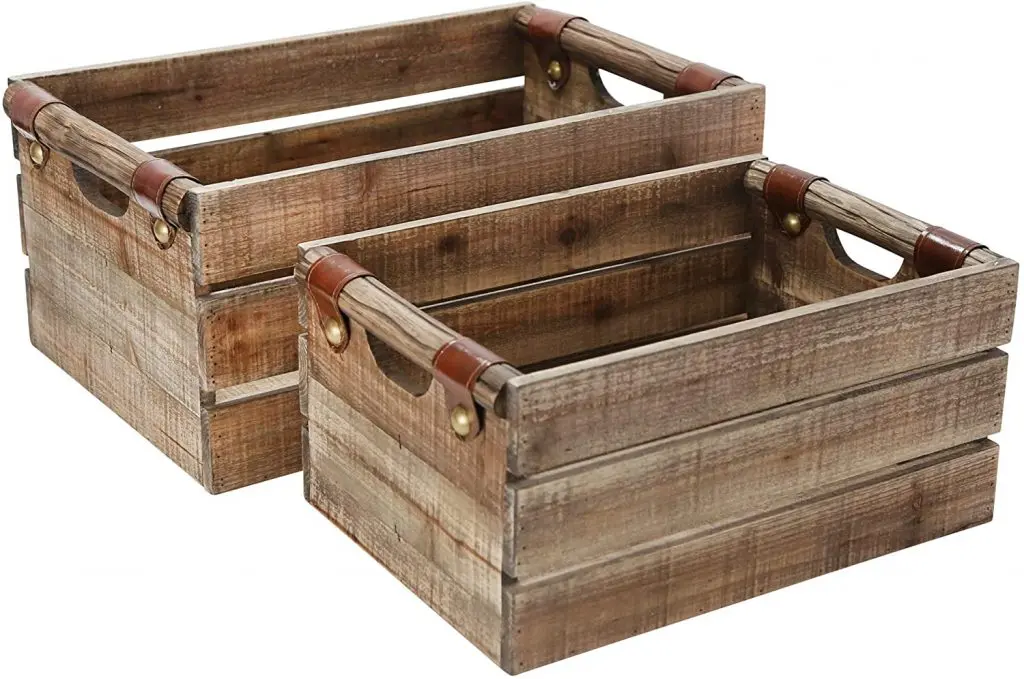
Once you’re done with managing it, put the load in it, and carry it with the help of someone else.
Option 4: Garden Trug
Non-wheel option but this can work amazingly if you need to move an average amount of cargo. No complexity, just fill the turg up with the loads and you alone can carry it.
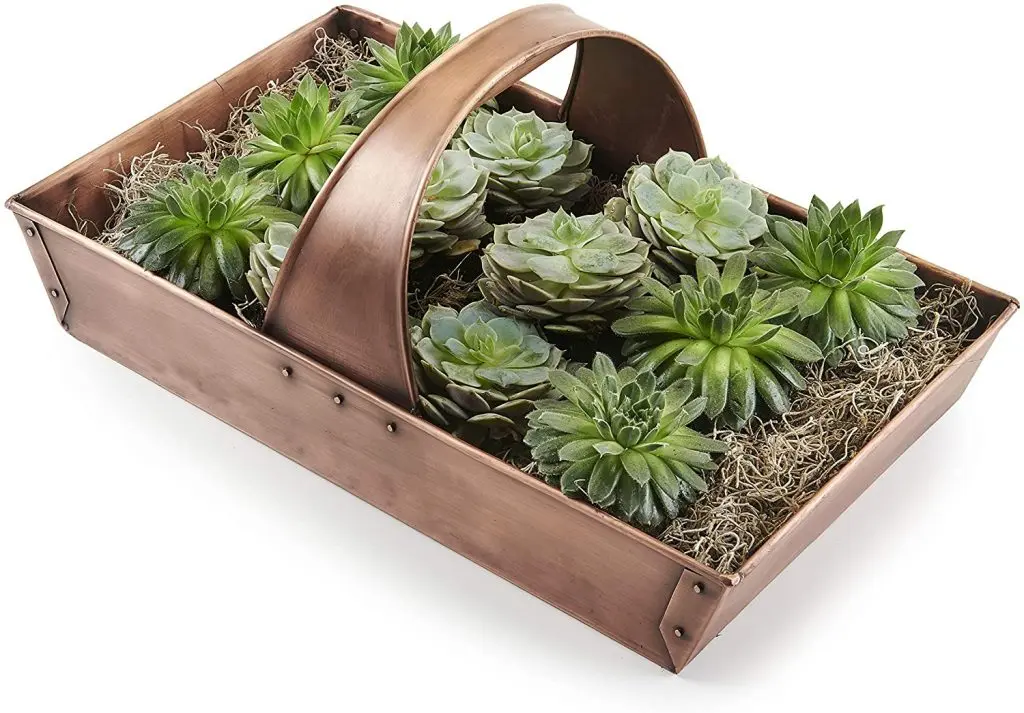
To make it even easier, you can tie ropes to the handles of the trug. Just knot the rope to the two handles of the trug and carry it.
However, the garden trug will be smaller in size, you won’t take heavy loads using it. But plastic or rubber trugs come up with both big or small sizes. Also, they have a wide opening that makes the job easier.
Option 5: Polyethylene Snow Toboggan
‘Wait, what? Can I use a toy to move dirt?’ This maybe your reaction after seeing this option. But hey, this is quite helpful if you do not want to use wheelbarrows. So, do not skip the idea of dragging dirt using this tool.
You can even gather rocks for your yard projects through a polyethylene snow toboggan. This is light but bigger in size as well as easier to move around. But you may not get so high sidewalls that could protect the dirt loads from spreading here and there.
Option 6: Hand Cart with Containers
Here you go with a ‘with wheel’ option that even came up with a simpler idea. Hand carts are also known as hand trucks, sack barrow, box carts, two-wheelers. Regardless of whatever you call them, you can carry dirt in this.
What you can expect from two-wheelers that’ll encourage you to use it as an alternative to wheelbarrows? Here are the answers-
- Hand carts can hold even more loads than a wheelbarrow can.
- For the presence of two wheels, you’ll find it easier to carry.
If you’ve set your mind to get this one for you, go through these easy steps-
Step 1: Get a Hand Cart
The first move should be choosing the right ‘hand cart’. You will find both four-wheeled and two-wheeled hand carts that are respectively horizontal and vertical. However, you better pick the two-wheeled one as the four-wheeled ones seem harder to drag on a rocky or uneven surface.
No matter which one you’re going for, you will need to put the loads on the top of a two-wheeled hand cart whereas you’ll have to put the load side-by-side if it is a four-wheeled one.
Step 2: Get the Containers
You need to fix the number of containers according to the amount of burden you will be carrying (e.g 10-20 gallons). Choose any of them but keep each container in the same size.
Step 3: Get them Together
In the last step, you will need to combine the hand cart and the containers into one piece. You can even tie up the bins through their handles.
And, that’s it. However, try not to fill the bins crossing their capacity.
A Few Tips Before We Wrap Up
Before we are going to wrap up, here we compiled some additional tips that you should keep in mind while moving dirt-
- Regardless of which option you choose, try to start with a light amount of load, it will aid adjusting.
- Make sure you choose the raised sidewalls of the dirt containers rather than the plain ones.
- Do not overload the transport mediums, make sure of their capacity in the very first place.
- Do not forget to wear safety glasses, gloves, and a mask while going through the dirt moving process.
Conclusion
Well, we are at the end of our discussion. We tried our best to meet you with the best alternatives to wheelbarrows. So, we can hope that after reading this article, you are no longer confused about how to move dirt without a wheelbarrow.
So, now you may feel that wheelbarrows work great to move dirt for your yard, but they are not ‘one and only’ options.
Now, you can pick any option from the six, choose one that fits best. And, do not worry. If you follow the instructions properly, you will do great. So, put your DIY hats on, and go for it.
Related Tips:
- Tiny Black Bugs In Plant Soil
- Black Spots on Succulents- 7 Causes With Cures
- Mint Leaves Turning Brown: Reasons With Remedies
- Problems with Blue Lake Pole Beans
- Strawberry Plants Leaves Are Turning Brown
- Types of Worms in Potted Plants
- How to Use Azamax? – The Complete Guide
- Plant Leaves Turning Brown and Curling up
Happy Gardening!








